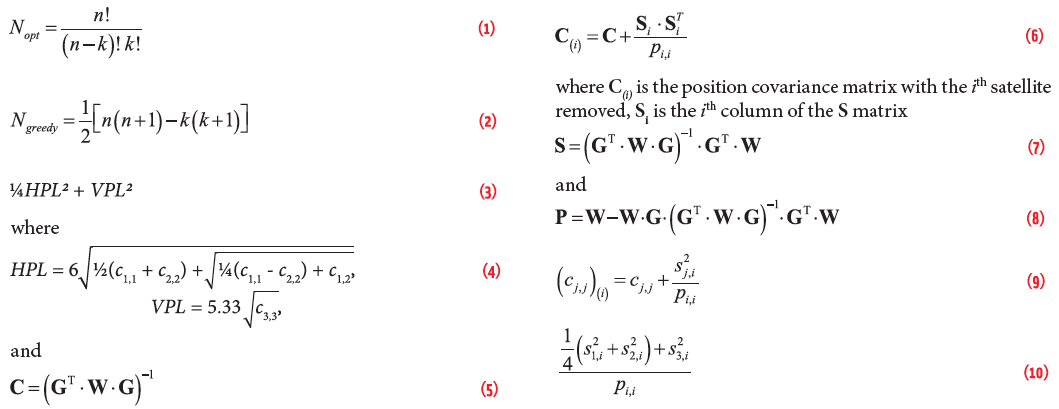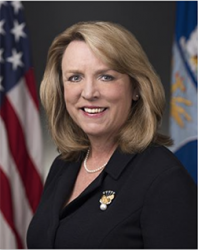With two federal budgets in play simultaneously, defense spending increases being proposed from multiple directions and a looming government shutdown it’s easy to lose track of where things stand with GPS funding.
By Dee Ann DivisWith expectations including the delivery of better accuracy and improved resilience to EGNOS performance, there’s plenty of excitement surrounding the development of EGNOS V3.
A big step toward this development was taken when the European Global Navigation Satellite Systems Agency (GSA) selected Eutelsat Communications for the development, integration and operation of the next-generation EGNOS payload on a future Eutelsat satellite.
By Inside GNSSThe entrepreneurial space launch firm SpaceX won a head-to-head competition with United Launch Alliance (ULA) to secure its second GPS launch contract.
The launch of the GPS III spacecraft onboard a Falcon 9 rocket is expected to take place in 2019. The $96.5 million deal was officially announced March 14.
By Inside GNSS RTM3205 Precision Timing Module. Photo source: EndRun Technologies.
RTM3205 Precision Timing Module. Photo source: EndRun Technologies. Santa Rosa, California-based EndRun Technologies, a provider of precision time and frequency solutions, announced last week at the International Technical Meeting-Precision Time/Time Interval (ITM-PTTI) meeting, the release of the RTM3205 Precision Timing Module for portable time and frequency applications. The second generation RTM3205 is optimized for size, weight, and power (SWaP), but can exceed the stability of a standard cesium atomic frequency reference, according to the company.
By Inside GNSS
The BeiDou Navigation Satellite System (BDS) is China’s contribution to the world in the domain of Global Satellite Navigation System (GNSS). The BDS is being developed by the Chinese government, mainly through military departments, with key considerations for China’s national security, economic interests and social progress.
By Ingo BaumannWashington has seen a lot of transitions, so even amidst political controversy it’s generally business as usual.
For the GPS community that business, at least in the near term, will likely center on changes in federal leadership — with many key appointments, like a new Secretary of the Air Force, still to be determined. In addition — even at this early stage when new lawmakers are still trying to find their offices — there are issues and opportunities worth watching in emerging legislation.
By Dee Ann Divis Equations
Equations Equations
EquationsWorking Papers explore the technical and scientific themes that underpin GNSS programs and applications. This regular column is coordinated by Prof. Dr.-Ing. Günter Hein, head of Europe’s Galileo Operations and Evolution.
By Günter W. HeinA January 14 launch of 10 Iridium NEXT satellites will help implement a space-based automatic dependent surveillance–broadcast (ADS-B) developed by Aireon, in partnership with leading Air Navigation Service Providers (ANSPs) from around the world, and designed to provide real-time GNSS tracking of aircraft over oceanic regions.
By Inside GNSS Air Force Secretary Deborah Lee James. (Photo source: DoD).
Air Force Secretary Deborah Lee James. (Photo source: DoD).Though the schedule is still uncertain, progress is being made on completing the new GPS ground system, said Air Force Secretary Deborah Lee James, who credited a crack group of private-sector computer wizards with helping get the program back on course.
Calling the GPS Next Generation Operational Control System (OCX), a "terribly, terribly important program," James said, however, she still did not consider the software-focused effort to be "out of the woods."
By Dee Ann Divis UAV demonstration at the 2016 INTERGEO conference
UAV demonstration at the 2016 INTERGEO conferenceINTERGEO, the 2017 European geodesy, geoinformation and land management conference and trade fair, will take place at Messe Berlin, South Entrance in Berlin, Germany on September 26, 27 and 28.
By Inside GNSS GPS III satellites in production. Image Source: Lockheed Martin.
GPS III satellites in production. Image Source: Lockheed Martin.The U.S. Air Force Space and Missile Systems Center (SMC) says it continues to work on GPS III ceramic capacitor testing and plans to have an updated launch schedule published late next month.
As Inside GNSS reported, the first GPS III satellite’s delivery, originally scheduled for August, was delayed by four months because of a Lockheed Martin subcontractor’s failure to test a ceramic capacitor.
By Inside GNSS